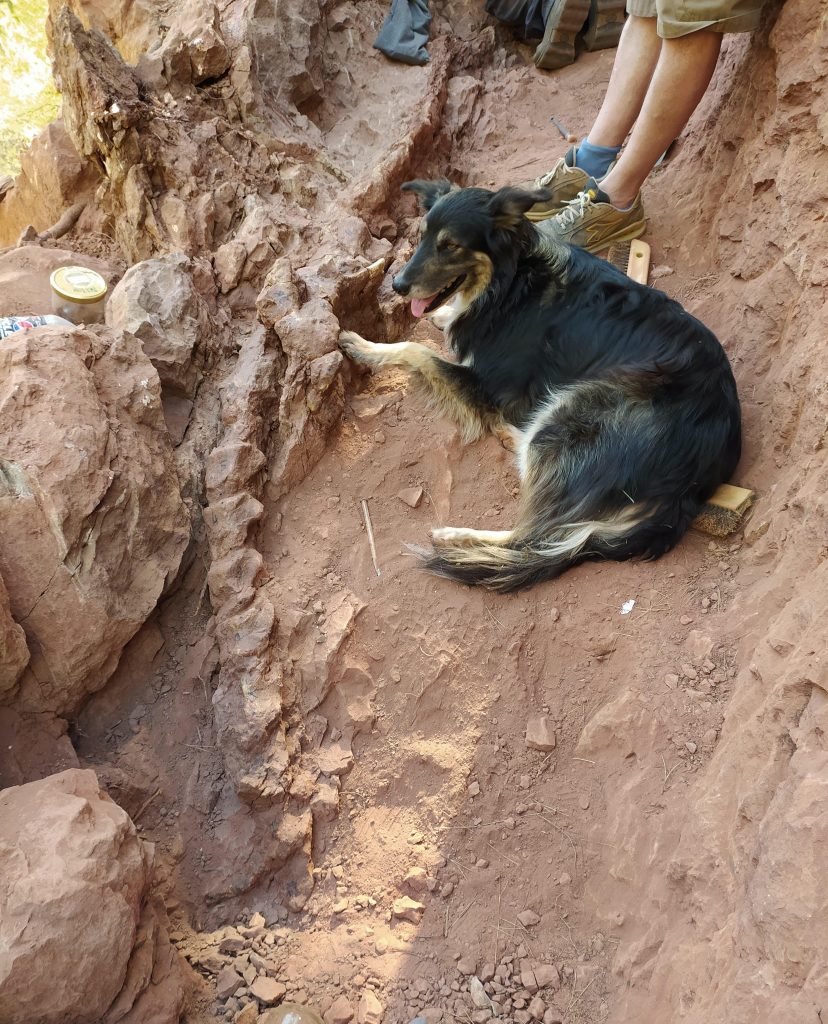Archaeology & History
A Frenchman Walking His Dog Stumbles on a Massive Dinosaur Fossil
The find is an almost-entirely intact skeleton of a titanosaur.

The last thing anyone would expect to come across while out walking their dog is a 70 million-year-old dinosaur fossil. Yet, that’s exactly what happened to a Frenchman near his village in the south of France.
In May 2022, while out on a stroll with his pooch, Muffin, paleontology enthusiast Damien Boschetto spied a dinosaur bone jutting out of a cliff in the forests of Montourliers, close to his hometown of Cruzy, France.
Boschetto, who has been a member of the Archaeological and Paleontological Cultural Association (ACAP) at the Cruzy Museum for eight years, rallied his fellow volunteers from the association and initiated a clandestine excavation. Until now, the paleontology enthusiasts have kept their discovery a secret, anxious to protect the site from pillagers. Over the course of the two years, they set up multiple 10 day-long excavations, carefully unearthing what turned out to be a gargantuan skeleton.
The 30-foot-long fossil is an almost-entirely intact, anatomically connected skeleton of a titanosaur, a dinosaur that walked the earth from the late Jurassic period to the closing of the Cretaceous period, 163.5 million years to 66 million years ago. The titanosaur is a four-legged herbivore with a long tail and neck, and a small head. It is the largest terrestrial mammal ever known, with some growing to the size of modern-day whales. Its fossils have been found in every continent except Antarctica.
The unearthed fossil skeleton is connected from its hind skull to its tail. While fossils of the animal are common across Europe, it is remarkably rare to uncover a specimen with such a degree of intactness.

Damien Boschetto (left) with a fellow researching presenting part of the discovered fossil. Photo: Damien Boschetto
“This is what makes it an interesting deposit from a scientific point of view,” Boschetto said. “It will make it possible to present to the general public animals almost complete in anatomical positions, which is something great.”
Scientists aged the fossil specimen at 70 to 72 million years old. Fossils of other flora and fauna from that era abound in the land surrounding Cruzy, with smaller samples regularly turning up in the last three decades, but none have compared to the scale of this find. In the titanosaur’s bone bed, a term used by paleontologists that describes a dense area of animal bone deposits, remains of other species were found. These included remnants of a Rhabodon, another herbivore, and bone fragments from Theropods, a carnivorous dinosaur.
Since his discovery, Boschetto has quit his job in the energy industry to pursue his passion full-time. The massive skeleton is now in the hands of the Cruzy Museum, where it will be protected, studied, and exhibited.





